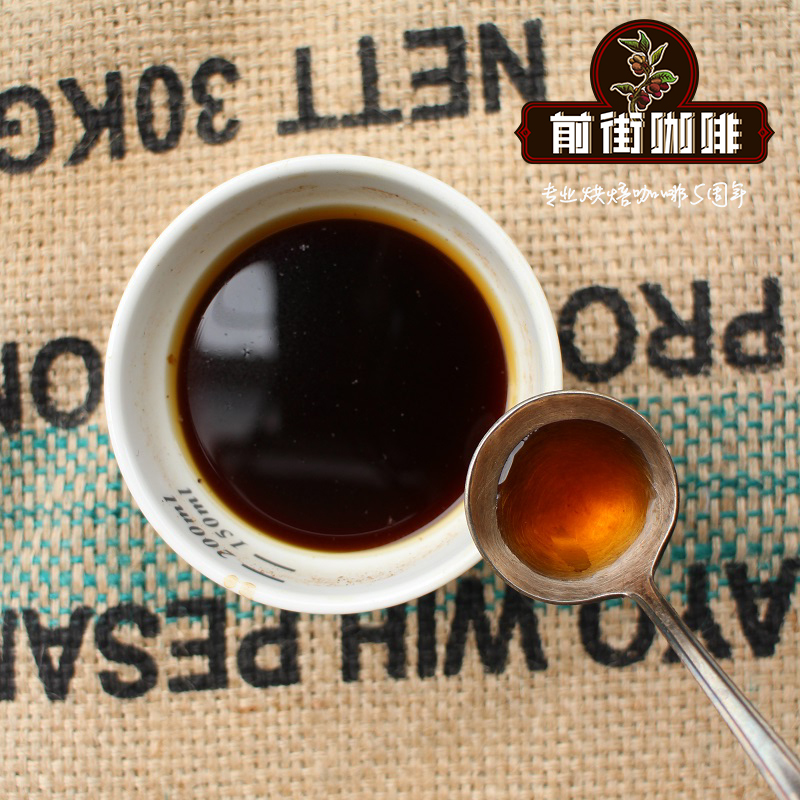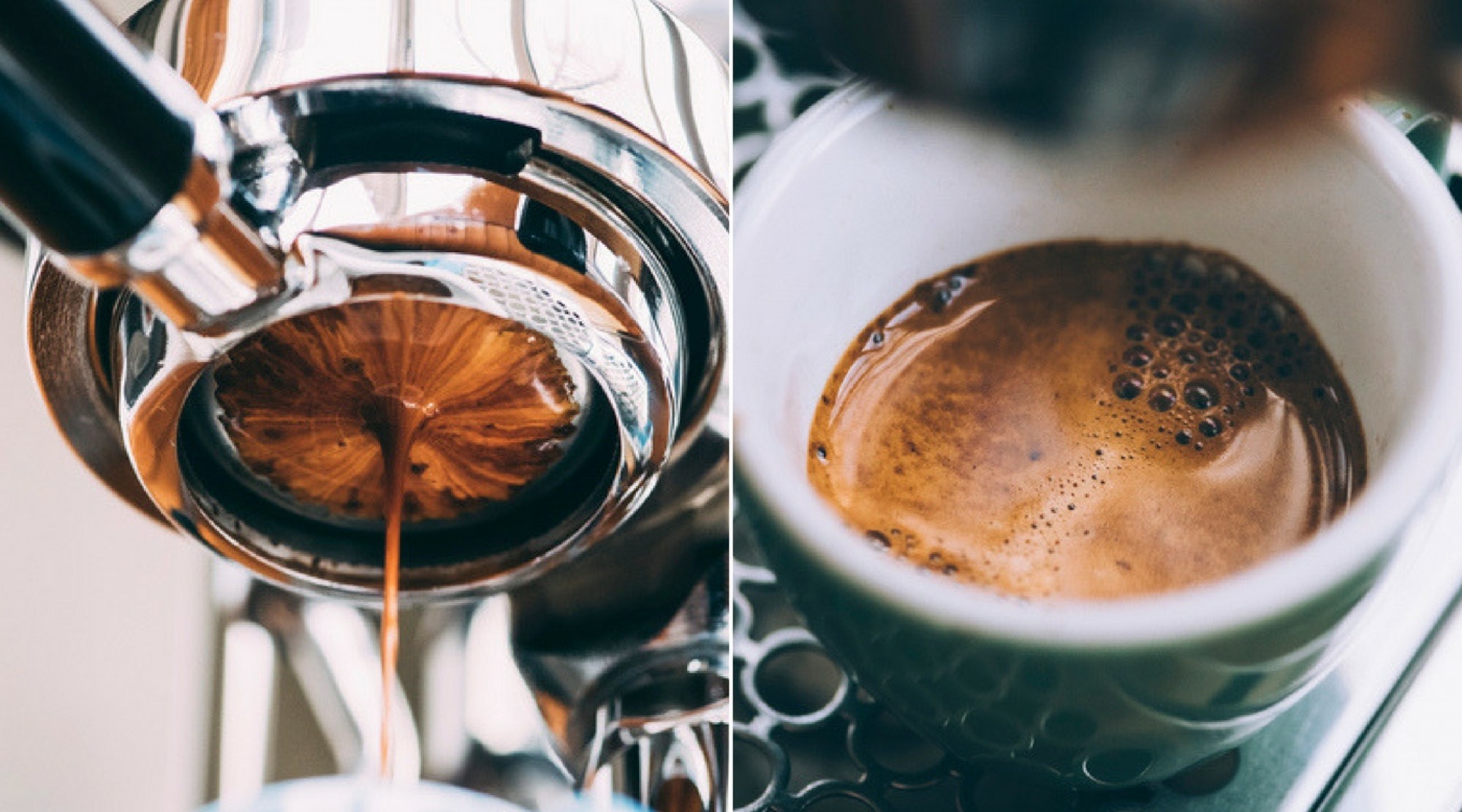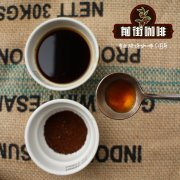How to make espresso coffee How to drink espresso coffee

Professional coffee knowledge exchange more coffee bean information please follow the coffee workshop (Wechat official account cafe_style)
Orthodox espresso production needs to be added in time. If a semi-automatic or fully automatic machine is used, the machine itself will perform force control. Generally, a semi-automatic machine needs to Dial in the powder, about 16-18 grams of coffee, which can produce about 40-50 c. C. In about 30 seconds. Espresso; and use our own power-controlled pull machines, such as Flair, we should adjust the coffee powder to produce a resistance of 6-9 BAR at break time, and finish the coffee within 30-45 seconds. When you buy coffee beans, you may need to refine their roughing again to achieve the ideal strength and time. When using Flair, if you have a feeling that you can't go down, or if the force shown by the stress is higher than 12 BAR, we recommend that you stop cooking immediately, remove the coffee powder in the cup, and start all over again.
Fried flour and dried flour
When putting coffee powder into a cup, a good Distribution method should be used to eliminate the coffee Clumps and Air pockets in the cup, and to avoid the generation of Channel *, such as using the WDT (Weiss Distribution Technique) powder method, or beating the powder cup on the pan. Before Tamping, you should also flatten the coffee powder in the cup (coffee powder should not be high or low in the cup!), and then carry out the action of powder, so as to avoid uneven extraction of the whole powder in the cup, because if the coffee powder is not smooth, the density of coffee powder will be different, resulting in uneven extraction of coffee powder! In addition, it takes a lot of effort to get rid of the powder. The purpose of the powder is to flatten the bed and remove the empty bags that have not yet been removed.
Powder-water ratio
Espresso's powder-to-water ratio (Brew ratio), that is, the ratio of coffee powder to coffee output, for example, 20 grams of coffee powder, filtered out 40 cc of espresso, the powder-to-water ratio is about 1:2 (1 cc equals about 1 gram) The powder-to-water ratio of espresso can vary greatly according to personal preference and regional characteristics, for example, from 1:1 to 1:4, the Italians also give different names to these different concentrations of espresso, such as Ristretto espresso,Normale espresso,Lungo espresso, etc. Of course, when using espresso filter pressure, the higher the powder-to-water ratio, the greater the amount of coffee injected into the cup, although the quenching rate will increase, but the coffee will become lighter. Generally the most common ratio of espresso powder to water is about 1:2 to 1:3. Different concentrations of espresso have different flavors and flavors after adding water or milk, milk foam or cocoa, and so on.
Filter temperature control
Making espresso depends on the water temperature, pressure and time to dissolve the soluble solid substance (Soluble solids) in the coffee powder, but the water temperature is too high or the time is too long, it will cause overquenching and make the coffee bitter! If the water temperature is too low or the time is too short, the coffee may be light and sour due to insufficient extraction. Generally speaking, we use a water temperature of about 91-96 degrees Celsius to filter espresso, but the deeper the coffee is roasted, the lower the temperature (because heavy-roasted coffee will taste bitter!), while light-roasted coffee should use higher temperature (because light-roasted coffee will taste sour!). All espresso coffee machines, whether fully automatic, semi-automatic or manual (such as Lapa machine), should be preheated to reach the working temperature. When using Flair, please do not neglect to preheat the cylinder; the water temperature has a great influence on the taste of espresso, so it is recommended that you try and adjust your boiling water temperature and preheating time / practice when making espresso to achieve your ideal taste.
Filter time control
As mentioned above, the filter time also affects the taste of espresso. Depending on the pressure / velocity design of espresso equipment itself, filter cup diameter / depth / hole design, powder quantity / fine powder and other factors, espresso filter time may fall between 20-45 seconds. When using Flair, we recommend that you control the filter time between 30-45 seconds to obtain the best quenching effect. When you want to use less powder for less coffee * quenching, we recommend that you grind the coffee finer, but still take 30-45 seconds as the target filter time.
Important Notice :
前街咖啡 FrontStreet Coffee has moved to new addredd:
FrontStreet Coffee Address: 315,Donghua East Road,GuangZhou
Tel:020 38364473
- Prev

How to judge the extraction quality of Espresso espresso?
Professional coffee knowledge exchange more coffee bean information please follow the coffee workshop (Wechat official account cafe_style) A cup of perfect Espresso is really hard to come by. Making a good Espresso (espresso) is one of the most challenging tasks for both coffee lovers at home and a senior Barista in a cafe.
- Next

Why does espresso go with iced water? how do you drink Starbucks espresso?
Professional coffee knowledge exchange more coffee bean information Please pay attention to the coffee workshop (Wechat official account cafe_style) Espresso taste strong and pure, compared to the drink, it is even more like a dessert and Taiwan or Japan, when drinking coffee in Italy, people are more used to adding sugar, like eating dessert. The taste of Espresso is strong and pure, compared with beverages.
Related
- Beginners will see the "Coffee pull flower" guide!
- What is the difference between ice blog purified milk and ordinary milk coffee?
- Why is the Philippines the largest producer of crops in Liberia?
- For coffee extraction, should the fine powder be retained?
- How does extracted espresso fill pressed powder? How much strength does it take to press the powder?
- How to make jasmine cold extract coffee? Is the jasmine + latte good?
- Will this little toy really make the coffee taste better? How does Lily Drip affect coffee extraction?
- Will the action of slapping the filter cup also affect coffee extraction?
- What's the difference between powder-to-water ratio and powder-to-liquid ratio?
- What is the Ethiopian local species? What does it have to do with Heirloom native species?

